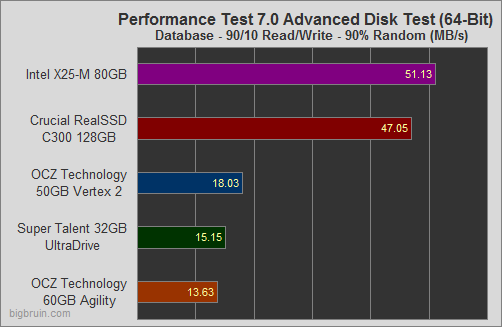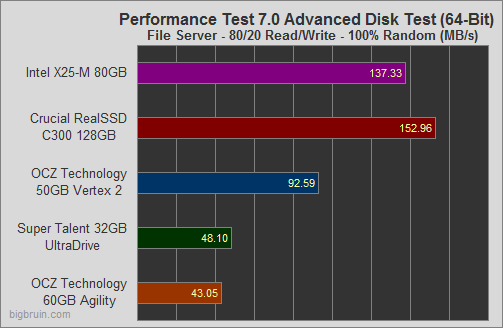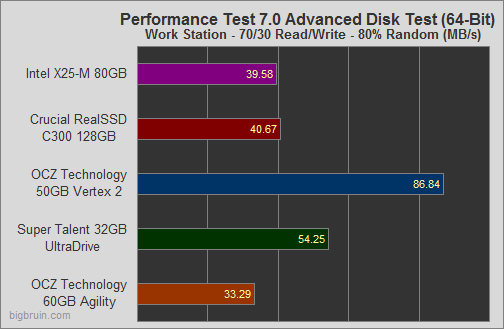Testing (continued):
Warm Up Round:
Before we get to any of the 'official' tests, I decided for a warm up of CrystalDiskMark 3.0 x64, run on just the Intel drive. What we see in the screen capture below is that the real world performance is capable of eclipsing the published specifications for reading and writing. 260.7MB/s on the test system beats the published value of 250MB/s for reading, and 85.26MB/s on the test system beats the published value of 70MB/s for writing.
 Performance Test v7.0:
Performance Test v7.0:
Tests from PassMark's Performance Test version 7.0 (64-Bit) "Advanced" tab were used to test the drives with something that may approximate real world usage in a few different scenarios. For this benchmark we will consider three different tests, and each provides results in units of MB/s (where higher is better).
The first test is called "Database", and it uses a 90/10 split of reads/writes, and 90% of the transactions are random. While I expected the Intel drive to do well since this test was so heavily weighted in favor of reading (where it does have a 250MB/s specification), I did not expect it to be the top performer! The Intel drive edges out the Crucial drive, and the other three are left out in the cold with scores that can't even compare.

The second test, called "File Server", uses a 80/20 split of reads/writes, where 100% of the transactions are random. Once again the Intel and Crucial drives distance themselves from the competition, but in this round it is the Crucial drive that takes a slight lead over the Intel drive.

The third and final test in this section is called "Work Station", and it uses a 70/30 split of reads/writes, where 80% of the transactions are random. The score from the OCZ Technology drive is puzzling (but repeatable), and makes the other drives look slow in this test. The Intel drive manages a score just over 39MB/s, which is only good enough for a second to last finish, but just over 1MB/s slower than its rival, the Crucial RealSSD.
